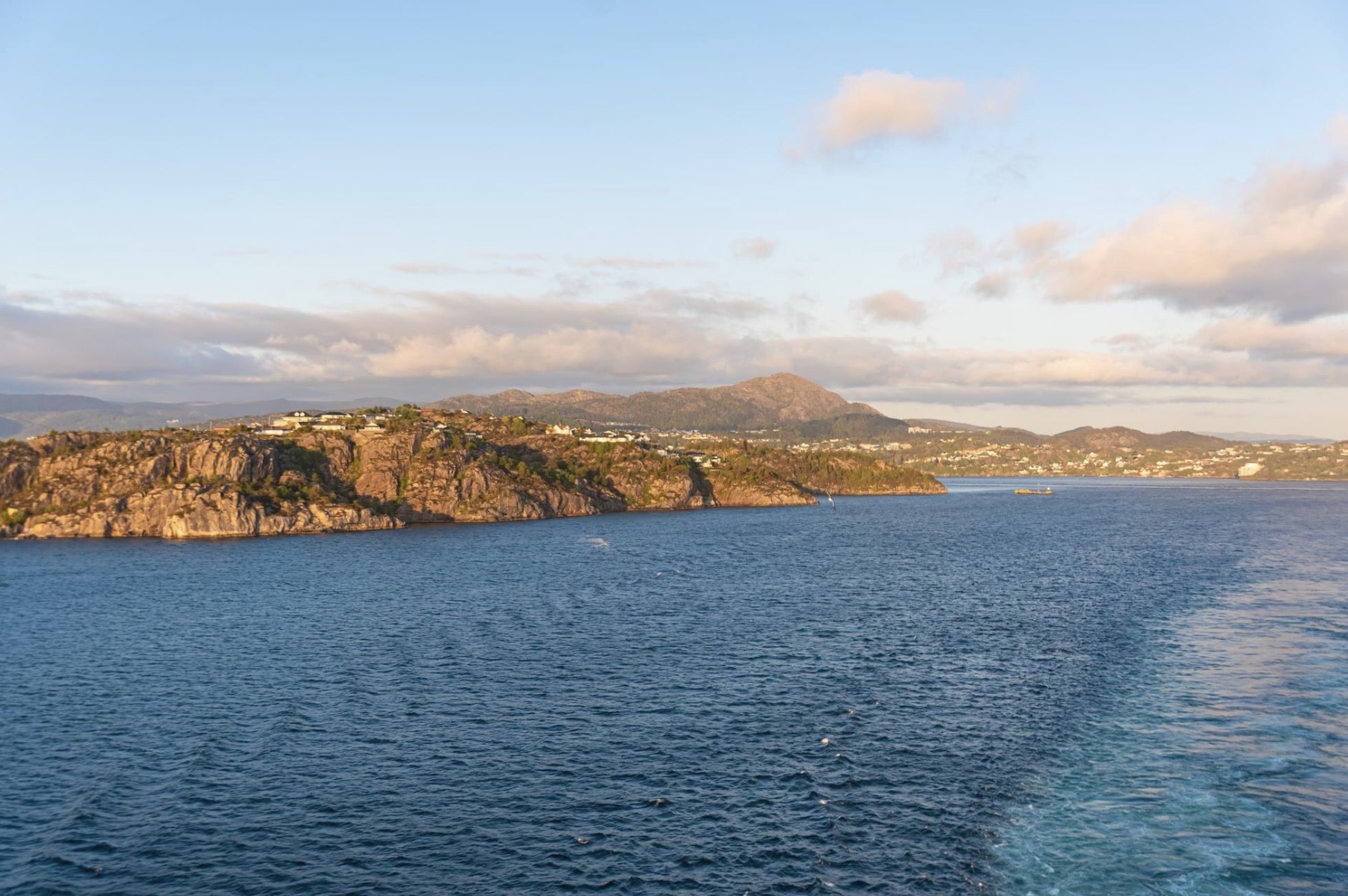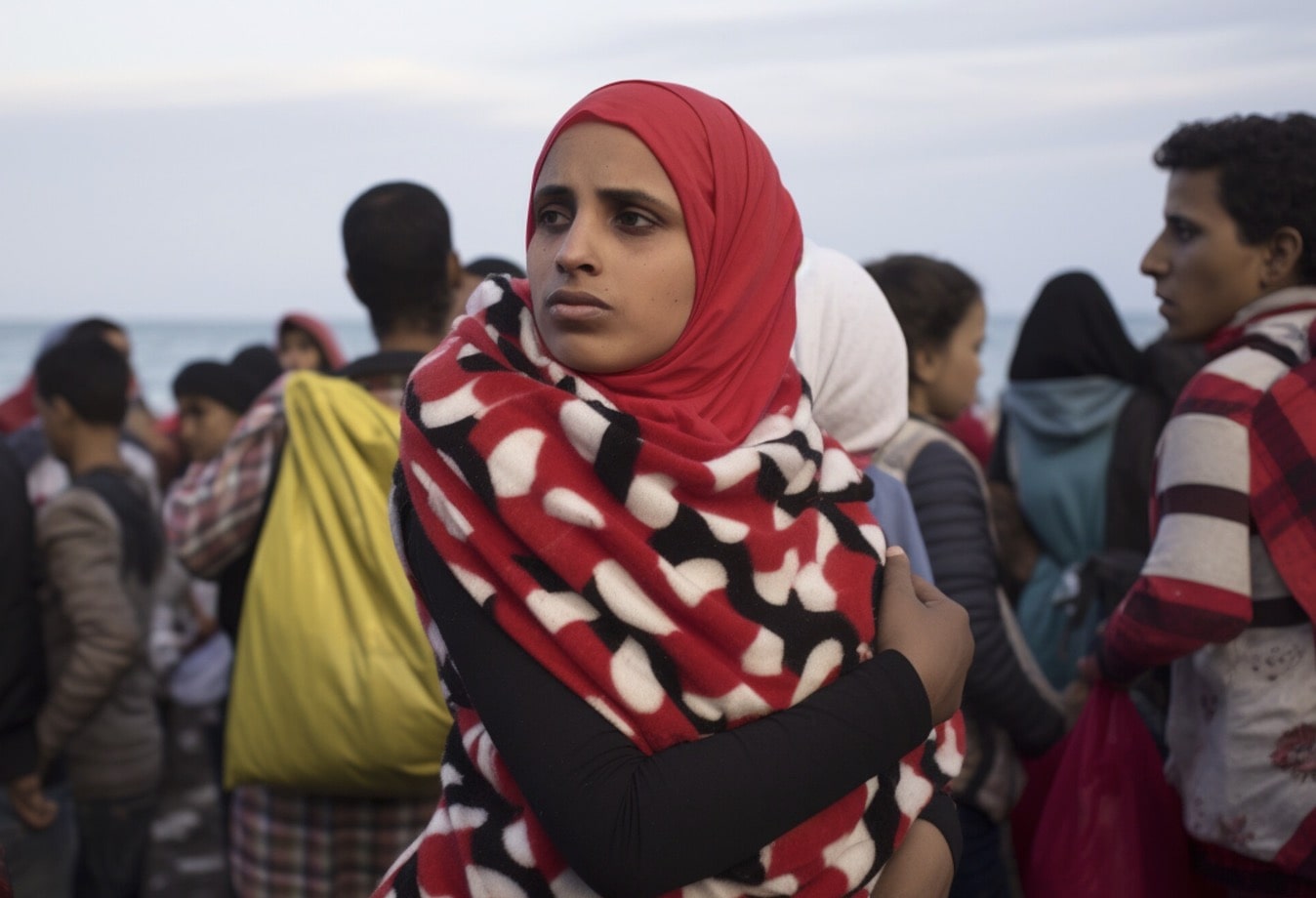
8 August 2025
By Renée Boskaljon
Life on the Canary Islands presents a complex blend of unbridled beauty and human suffering. While Western European tourists work on their tans on the beaches of the Spanish archipelago, located off the west coast of Africa, miles away, women, men, and children lose their lives on the vast Atlantic Ocean. Full of hope and fear, and facing the long journey ahead, they often had saved for years to pay the smugglers, setting off in flimsy boats from the shores of West African countries. In 2024, the Spanish organisation, Caminando Fronteras, recorded 9,757 deaths on the migration route to the Canary Islands.
The figure of 9,757 is an incomprehensible number, but who knows how many more have lost their lives? Caminando Fronteras registered that 131 boats have entirely disappeared on the Canarian route. It’s impossible to know precisely how many were on board, as the organisation relies on the testimonies of those in areas of departure.
The migration route is also used by an increasing number of women who face heightened challenges on their journey to reach Europe. This was painfully demonstrated in May when seven women and girls tragically drowned meters from the port of El Hierro, the second-smallest of the eight inhabited islands of the Canary Islands. Of the 145 people on board, almost half were women, and 15 women and little girls were trapped underneath the ship when the boat began sinking.
Most women who do make it to the islands are transit migrants, meaning they have been on the move for years to get to the Spanish islands. They face multiple forms of violence and discrimination, both in their home countries and during their journey.
Silent Crisis
The crisis on the Canarian route is a silent one. In 2015 and 2016, when thousands drowned while trying to reach Mediterranean shores, world headlines were made with the image of a little boy on the beach of the Greek island of Lesbos. Now, little attention is paid to the tremendous amount of suffering and loss of life on the Canarian route.
In 2024, 60 per cent fewer people attempted to reach European shores through the central Mediterranean route. In the same year, the Atlantic migration route increased by 19 per cent. Over the past years, Europe has invested immensely in closing the Mediterranean route, the traditionally most-used migration route. The European border control agency Frontex heavily patrols the Mediterranean waters. On top of that, Europe has also increasingly employed so- called partner countries to stop migrants from coming to Europe. Over the past years, the EU and its member states have signed multiple agreements with North African countries and Turkey to curb migration, including the infamous 2016 EU-Turkey migration deal.
Now that it has become increasingly difficult for migrants to reach Europe through the Mediterranean, they are forced to take increasingly dangerous routes. The Canarian migration route has been used since the 1990s, but never before had so many migrants taken this route as in recent years. With a record high of nearly 47,000 people reaching the Canary Islands in 2024, while tragically, almost 10,000 others lost their lives. This means that nearly one out of every six migrants attempting the journey did not survive.
The migration route to the Canary Islands has three main departure points. The safest routes are from Morocco, which takes about one to two days, Mauritania, which takes five days, and Senegal, which can take more than 10 days. The boat carrying 145 people that tragically sank in May also departed from Senegal and took 10 days to reach the Canaries.
Due to intense border patrolling by Moroccan authorities, pressured by the EU, more and more migrants are departing further south, with the majority taking the more dangerous routes from Mauritania. However, Europe has also strengthened ties with Mauritania to curb migration, with a migration deal in February 2024 worth €200 million.
The conditions on board ships departing from Senegal and Mauritania are unimaginable. People on board die of dehydration, hypothermia, and other life-threatening conditions, such as infections. Bodies are thrown overboard. Multiple times, ships are found with only a few survivors on board, while others have already died from the harrowing conditions.
The Impact of Restrictive Migration Policies on Women
Of the 145 people on board the boat that capsized in May, almost half were women, an exceptionally high number. Women traditionally represent between 10 and 20 per cent of migrants on the Atlantic route, according to Caminando Fronteras. The organisation documented a notable increase in 2024 of women departing from the coasts of Senegal, Gambia, and Mauritania for the Canaries, commonly spending months or even years in transit countries before eventually reaching the Canary Islands.
This represents a significant shift from traditional migration patterns, where men would typically migrate first and their wives or female family members would join them later. Today, women are increasingly observed travelling without male partners or family members as they flee escalating conflict and climate change effects in Sahel region countries such as Burkina Faso, Niger, and Mali.
The Spanish Commission for Refugees (CEAR) observes that increasingly restrictive EU migration policies designed to prevent migrants from reaching Europe constitute a major cause of violence faced by women and girls in transit. The European Pact on Migration and Asylum reinforces these restrictive policies through police raids, visa restrictions, fence construction, and illegal deportations, forcing women to undertake increasingly dangerous and lengthy journeys to seek protection. Without access to safe and legal routes, they must rely on human trafficking networks that subject them to vulnerability, violence, and discrimination, threatening their survival.
Sexual violence poses the greatest risk for women and girls attempting to reach Europe’s borders. Women and girls migrants face four times the risk of contracting sexually transmitted infections compared to men, directly resulting from sexual violence endured during their journeys. Most women travel with their children, many born during the trip, often out of sexual violence, and often rely on exploitative work, including prostitution, to survive. Trafficking networks frequently recruit these women, taking advantage of inadequate legal protection in transit countries and the impunity of migration control systems.
Survival Through Exploitation
Women attempting to reach the Canary Islands often originate from extremely impoverished regions, with many trapped in slave-like conditions in transit countries such as Mauritania to finance their journeys. Coming from West and Central Africa, they often transit through Libya and North African countries, facing systematic sexual violence, racially motivated femicide, and desert deportations. A 2024 investigation by collaborative newsroom organisation, Lighthouse Reports, revealed how tens of thousands of black people in Morocco, Mauritania, and Tunisia were abandoned in deserts. National authorities would collect black individuals from streets, transport them by bus, and abandon them in deserted areas. While most were migrants, some held residency permits. The investigation exposed European support for these “desert dumps” through financial resources, equipment, and intelligence, including testimonies from pregnant women among those abandoned.
Additionally, a study examining how the EU’s border externalisation policies, particularly at the Moroccan-Spanish border, reinforce gendered and racialised violence against Central and West African migrant women. Women are often forced to rely on human traffickers to attempt border crossings. Women enter arrangements with male “protectors,” trading sexual services and domestic care for physical safety during the journey. The study also found that smuggling networks cynically exploit pregnant women as human shields to increase the likelihood of rescue at sea. Based on IOM reports on women’s migration journeys in Africa, women not only experience sexual abuse, but are also vulnerable to physical violence, kidnapping and forced labour. East African women reported experiencing non-sexual physical assault and robbery at higher rates than women from other regions. The reports also highlight particularly severe conditions in Libya, where women endure horrific abuses including slavery and being offered cash in exchange for, or forced into providing, blood, organs and body parts. CEAR reports that even menstruating girls during ocean passages become sources of terror due to persistent myths that menstrual blood attracts sharks, adding fear and shame to already traumatic experiences.
Unaccompanied young girls also undertake the journey to the Canary Islands, fleeing countries like Ivory Coast, Senegal, and Guinea to escape genital mutilation, forced marriage, and structural violence against women. In war-torn countries like Mali, girls are kidnapped to marry soldiers. Upon European arrival, girls are at times not recognised as children due to asylum system limitations or encouragement from other migrants to declare themselves adults, leaving them without adequate protection systems.
Survivors
While tourists continue to enjoy the beaches of the Canary Islands, survivors of the horrendous Canarian route struggle to adapt to their new reality in Europe. Aissata, a 22- year-old mother from Guinea, walks through the streets of Las Palmas with her 3-year-old daughter by her side. Having fled a violent marriage, she spent years moving through different West African countries before finally departing from Senegal. Just one week after their arrival, they are still finding their way around the unfamiliar city.
Despite everything, they feel relieved to have finally reached what they hope is safety in Europe. Aissata’s daughter remains full of life, seemingly unbroken by their 10 days at sea.
“It’s a genetic thing,” Aissata says with a small smile.
My mother had the same strength. I hope to build a better life for my daughter and myself here in Europe and hopefully help my family in Guinea, too.
EU restrictive border policies push women toward ever-more perilous routes, where sexual violence and death at sea have become the price of seeking protection. It is urgent that the EU and its member states live up to their moral and legal obligations by prioritising the safety of those forced to flee over policies that prevent refugees from entering Europe.
Survivors like Aissata and her daughter, who arrive to the Canary Islands, are often traumatised after enduring unspeakable hardship and loss during months or years in transit and are thus in need of comprehensive humanitarian assistance, including legal protection and long-term integration support to rebuild their lives in dignity.
Renée Boskaljon is a Dutch migration researcher and journalist based in Spain. She holds a MA in Refugee Protection and Forced Migration Studies with SOAS University of London.


